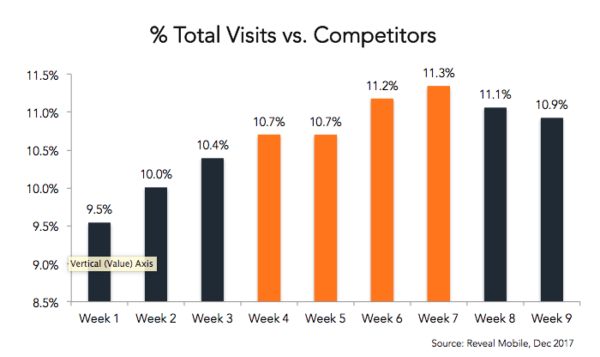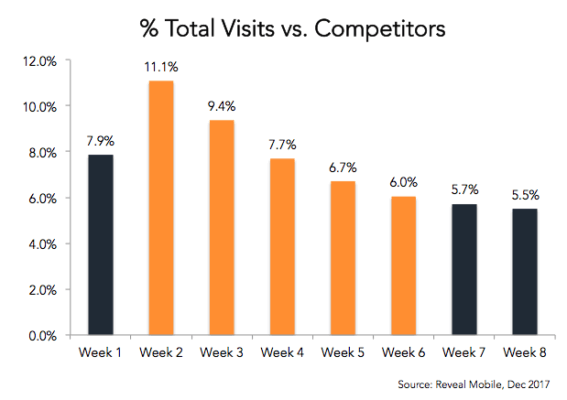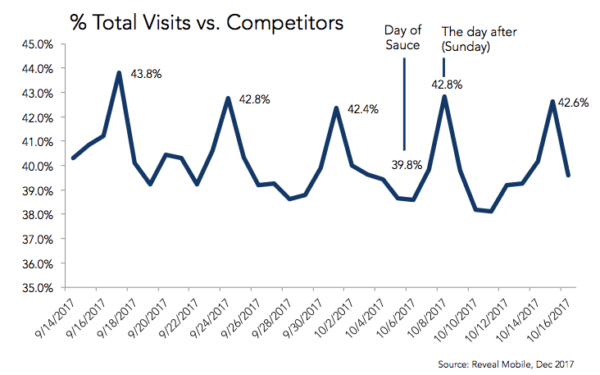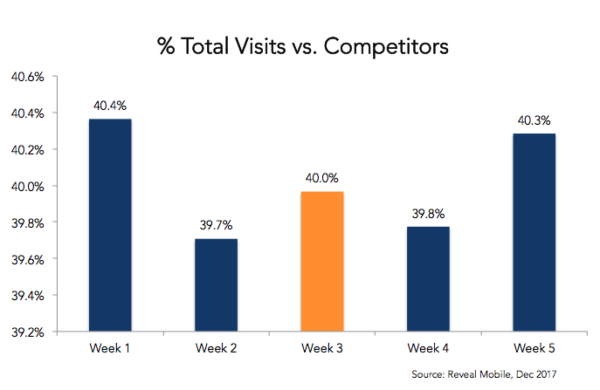Measuring real-world foot traffic results from 3 quick-service restaurant campaigns
Do social media stunts and digital ad campaigns drive real traffic to fast food locations? Contributor Brian Handly describes three campaigns and their results.
 Over the course of 2017, three advertising campaigns in the restaurant industry caught our attention. Only one was a strategically created campaign, with the other two originating as social media events that were completely unplanned by the companies involved.
Over the course of 2017, three advertising campaigns in the restaurant industry caught our attention. Only one was a strategically created campaign, with the other two originating as social media events that were completely unplanned by the companies involved.
To get a sense of how events like this drive store visits, we set out to evaluate if these campaigns resulted in winning traffic from competitors. (The data used here was sourced from opted-in location-sharing mobile devices; it was aggregated into anonymized audience segments and contained no personally identifiable information.)
We looked at three separate events from Chick-fil-A, Wendy’s and McDonald’s, comparing their share of foot traffic against each other and competitors Subway, Burger King, Moe’s, Taco Bell, Arby’s, Qdoba and Chipotle.
Chick-fil-A’s free breakfast campaign
For the month of September, Chick-fil-A’s mobile app users could get a free breakfast if they ordered one of three items through its “One: app to pick up in-store. While almost everyone loves a free chicken biscuit, how did this advertising campaign impact foot traffic?
The Chick-fil-A campaign ran from August 31 through September 30, 2017. During this time, Chick-fil-A did grow its foot traffic market share against their competitors. Over the four weeks of the campaign, they progressed from a 10.4 percent share of foot traffic the week prior to the campaign’s start to 11.3 percent, or an 8.6 percent increase in market share. The promotion does look to have impacted foot traffic positively.
Wendy’s #NuggsForCarter
On April 5, 2017, a Twitter user named Carter Wilkerson tweeted to Wendy’s asking how many retweets he would need for a year’s supply of free Wendy’s nuggets. Wendy’s cleverly replied and set the goal at 18 million retweets, and Carter dedicated himself to meeting that lofty goal.
This social media event quickly went viral, with Carter racking up over 3 million retweets, becoming the most retweeted tweet at that time. But did this viral event result in increased foot traffic to Wendy’s?
We saw an interesting trend in foot traffic at Wendy’s while the viral #NuggsForCarter Twitter event took place. Wendy’s benefitted from a surge in new foot traffic against their competitors almost immediately, spiking with new foot traffic from 7.9 percent share to 11.1 percent.
Once the shine wore off, their foot traffic waned week-over-week, eventually dropping down to 6 percent. This was a one-time, non-planned event, which is likely why it was less sustaining than Chick-fil-A’s planned marketing campaign. However, we bet that any company would welcome positive viral social media events that result in more sales with zero marketing budget.

McDonald’s Szechuan sauce
McDonald’s Szechuan dipping sauce was released for a limited time in the summer of 1998 as a promotion for Disney’s “Mulan” movie. On April 1, 2017, the TV show “Rick and Morty” featured the sauce as a nostalgic McDonald’s throwback they wish they could sample again. Social media exploded with requests for a Szechuan sauce comeback.
On October 1, 2017, McDonald’s tweeted the sauce would return for one day in US restaurants on October 7, 2017. Would a single-day sauce significantly impact foot traffic and win market share?
The single-day release of McDonald’s Szechuan sauce took place on Saturday, October 7, 2017. When we evaluated the single-day traffic, we did not see any significant gain against competitors for acquiring more market share.
When we expanded out and looked at week-over-week trends, there didn’t appear to be any significant gain in foot traffic against competitors, either. Despite the social media buzz, the Szechuan sauce appears to have had little impact on nationwide foot traffic.


Methodology
To make sure we weren’t missing anything significant across all three campaigns, we looked at daily and monthly visitation trends from May through October 2017, covering the time frame when these three separate campaigns occurred.
When evaluating Chick-fil-A, Wendy’s and McDonald’s against competitors Subway, Burger King, Moe’s, Taco Bell, Arby’s, Qdoba, and Chipotle, we saw no significant long-term shifts in foot traffic. We had to look down into the specific events, all outlined above, to see if there was any positive correlation between the campaigns and foot traffic.
The big picture here is that new technologies are enabling the measurement of a campaign’s effectiveness at driving new foot traffic and, ultimately, sales. This brings with it many new capabilities, such as determining if the channel in which the campaign occurs affects the longevity and overall impact of the campaign.
This also means that advertisers will begin — and many have already started — judging digital campaign success not based upon click-through rates, but upon the ability to bring new and existing customers back through the door.
Opinions expressed in this article are those of the guest author and not necessarily MarTech. Staff authors are listed here.
Related stories
